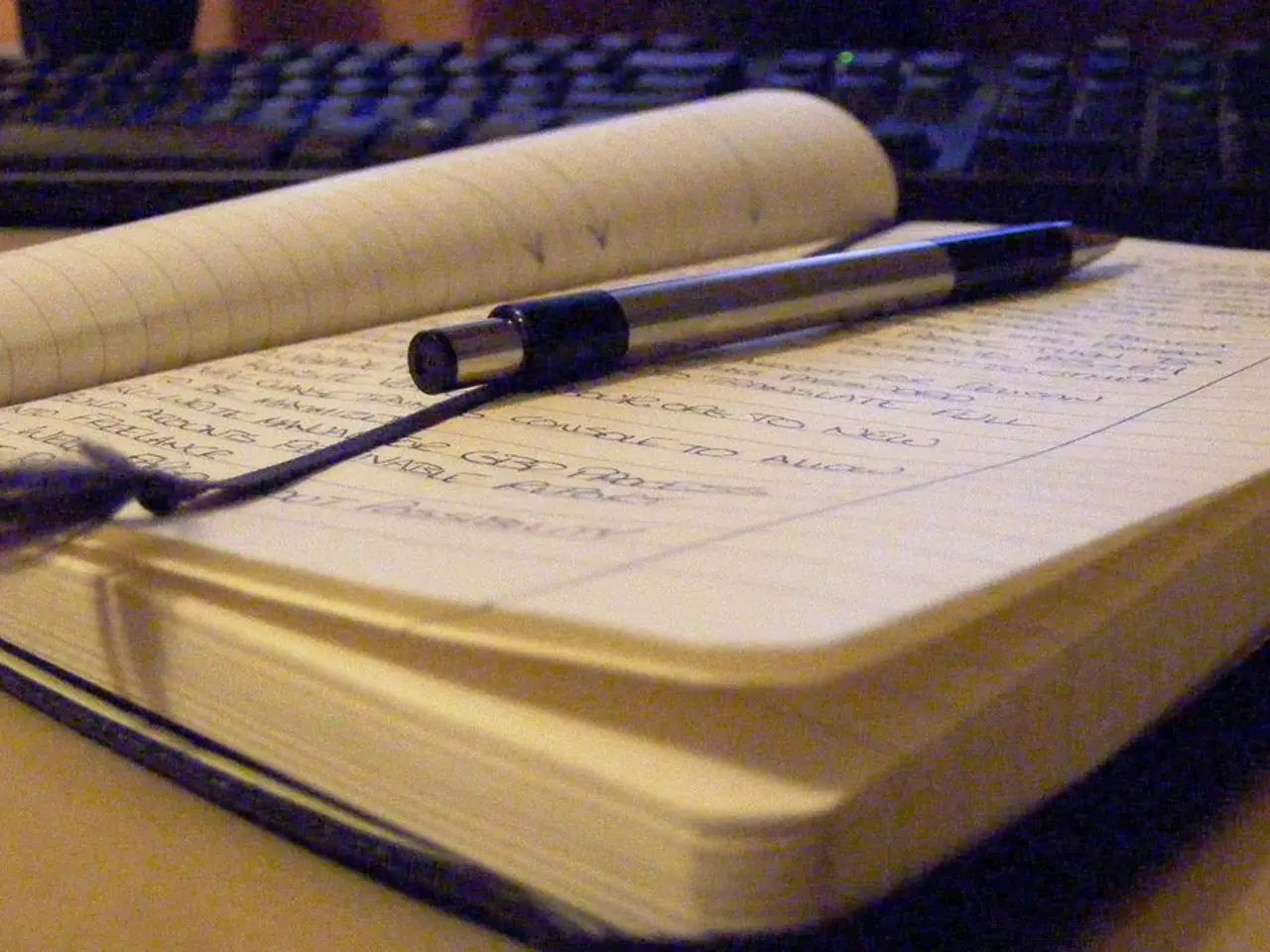Strategies that Improve Learning for Students with Dyslexia within an Academic Setting
Dyslexia, a neurological condition affecting 5-10% of the population, presents unique challenges in the realm of reading, spelling, and writing. However, recent advancements in educational strategies have shown promising results in helping students with dyslexia thrive academically. One such approach is the use of multisensory instruction, a method that engages multiple senses simultaneously to build stronger neural connections between letters, sounds, and words.
Interactive applications that incorporate game-based learning can provide a motivating environment for skill development, particularly for students with dyslexia. These applications, when combined with multisensory instruction, can foster a more inclusive learning environment.
Multisensory instruction techniques, such as visual, auditory, and kinesthetic modalities, aid students with dyslexia by engaging multiple senses in the learning process. Examples of such activities include tracing letters in sand or with textured materials while saying the corresponding sounds aloud, using structured, explicit phonics instruction to teach phoneme-grapheme relationships, and incorporating kinesthetic movements to break words into syllables or sound segments.
The most effective multisensory instruction techniques involve engaging multiple senses simultaneously, especially sight, hearing, touch, and movement. This includes activities such as:
- Tracing letters in sand or with textured materials while saying the corresponding sounds aloud (combining tactile, kinesthetic, and auditory inputs).
- Using structured, explicit phonics instruction with a step-by-step sequence to teach phoneme-grapheme relationships.
- Incorporating kinesthetic movements (e.g., arm motions or tapping) to break words into syllables or sound segments.
- Engaging students in sound blending and segmentation activities like tapping or clapping sounds in words.
- Utilizing manipulatives like letter tiles to build words physically.
- Applying colour-coded materials or overlays to support visual discrimination.
These methods are central to structured literacy programs such as the Orton-Gillingham approach and have strong evidence for effectiveness because they create multiple pathways to learning and memory retention, which is particularly beneficial for dyslexic learners who struggle with phonological processing.
The systematic and explicit nature of instruction ensures new skills are introduced at an appropriate difficulty level with sufficient support, building confidence and automaticity. Moreover, multisensory teaching caters to diverse learning preferences, which enhances engagement and learning for dyslexic students.
Open lines of communication with parents can strengthen the support system for students with dyslexia. Regular updates and discussions regarding progress and challenges help create a united front in addressing the student's educational needs.
In addition, technology, such as text-to-speech software and audiobooks, serves as a valuable tool in supporting students with dyslexia by providing customized resources that cater to their unique needs.
An Individualized Education Plan (IEP) for dyslexia is a tailored educational framework designed to meet the unique learning needs of students with this specific learning disability. Tailored teaching strategies cater to diverse learning needs, fostering a more inclusive environment. Differentiated instruction is essential, implementing varied teaching strategies tailored to meet diverse learning needs.
Assessment and progress monitoring strategies are integral to understanding a student's unique learning journey, enabling timely identification of areas requiring intervention or support. Ongoing feedback is critical in transforming the educational experience for students with dyslexia, regular, constructive feedback helps identify individual challenges and celebrate progress, thus motivating learners and strengthening their reading abilities.
Collaborative learning is crucial, incorporating group activities that allow students to support each other, facilitating peer assistance and social interaction. Digital platforms that promote collaboration, such as virtual classrooms or educational forums, provide valuable social interaction, helping build a sense of community.
Encouragement in a supportive classroom culture is important, creating a culture where mistakes are viewed as part of the learning process. Professional development for educators focusing on teaching strategies for dyslexia is essential in equipping teachers with the skills necessary to support students effectively.
In conclusion, the most effective multisensory instruction for students with dyslexia is characterized by explicit, structured, and sequential teaching that integrates seeing, hearing, touching, and moving to reinforce the connection between sounds and letters. This combined sensory engagement helps dyslexic learners overcome phonological deficits and develop stronger reading skills. By implementing these strategies, educators can create a more inclusive and supportive learning environment for students with dyslexia, fostering academic success, enhancing self-esteem, and motivating learners.
[1] Torgesen, J. K., Wagner, R. K., & Rashotte, C. A. (2006). What works for struggling readers: Lessons from scientific research. Guilford Press.
[2] Vaughn, S., & Fletcher, J. M. (2003). Multisensory instruction for students with learning disabilities: A meta-analysis. Journal of Learning Disabilities, 36(4), 277-295.
[3] Snowling, M. J., & Hulme, C. (2005). Phonological awareness in reading: A handbook for teachers. Routledge.
[4] Torgesen, J. K., Wagner, R. K., Rashotte, C. A., Voeller, K. L., & Conway, T. P. (2001). A synthesis of research on the Orton-Gillingham approach for teaching reading. Journal of Learning Disabilities, 34(2), 67-84.
[5] Torgesen, J. K., Wagner, R. K., Rashotte, C. A., Voeller, K. L., Conway, T. P., & McMaster, D. L. (2006). The effectiveness of Orton-Gillingham-based programs for teaching reading: A review of the research. Journal of Learning Disabilities, 39(4), 316-336.
- The use of multisensory instruction, particularly in e-learning environments, can be beneficial for students with dyslexia, as it engages multiple senses and aids cognitive load, facilitating a more inclusive learning environment.
- In the realm of education-and-self-development, professional development is essential for educators, providing them with strategies to support students with dyslexia, thereby contributing to their personal-growth and academic success.
- Regular assessment and progress monitoring strategies strengthen the support system for students with dyslexia, ensuring timely identification and intervention of areas requiring support, thereby enhancing their learning experience and promoting learning through boosting their confidence and motivation.




